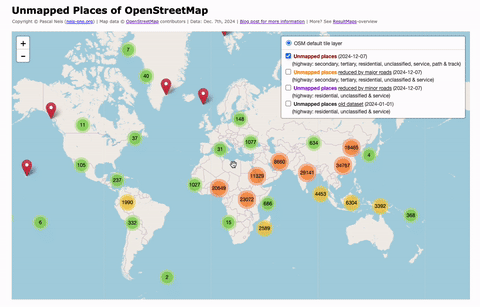Category: Map
-

Unmapped Places of the OpenStreetMap World – 2024
In 2010, I first conducted a study which identified regions (places) in the OpenStreetMap (OSM) project in Germany that still had potential for more detailed mapping. Later, in 2016, this analysis was repeated and extended to the entire world. I have since regularly carried out these studies and published the results. The algorithm and some…
-
How to detect suspicious OpenStreetMap Changesets with incorrect edits?
Since its rise in popularity, the well-known online encyclopedia Wikipedia has been struggling with manipulation or, in the worst-case, vandalism attempts. Similarly, the OpenStreetMap (OSM) project suffered several times over the past few years of cases where incorrect map data edits were made. These erroneous edits can stem at times from (new) contributors or illegal…
-
The State of the Map. United States. Street Network. 2013
Last year we wrote a journal paper in which we analyzed the OpenStreetMap (OSM) dataset of the United States which was published on May 28th, 2013 in the Transactions in GIS Journal. You can download a free pre-print version here. This paper has been published just on time to add to the discussion at the…
-
The OpenStreetMap Contributors Map aka Who’s around me?
The wait is over! As I mentioned in December, I have been working on an interactive online map, which shows you all volunteers of the OpenStreetMap world on a map. The first three layers contain …
-
Distribution of Active Users in OpenStreetMap – Oct-Nov 2012
Two years ago, we created some maps which showed you the number of users per country for a timeframe of one month. Maybe some of you remember that the highest concentration of active contributors in relation to the countries’ population …
-
OSM-GPS-Grid-Map
More than 6 weeks ago, I wrote a blog post about “Which country has the most OpenStreetMap GPS Points?”. You might remember that Russia and Germany provide the most OSM GPS points. Now, in a second step I created a worldwide grid …